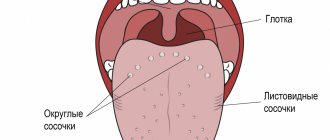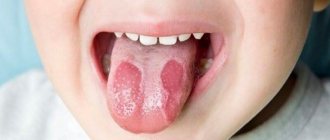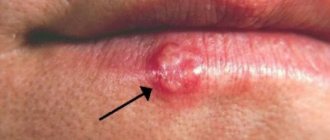Tongue diseases do not develop as often as pathologies of teeth and gums. However, they cause a lot of trouble and pain. As a rule, people are faced with the problem of enlargement of the papillae, changes in their color and texture. Their hypertrophy causes pain and discomfort, signaling an inflammatory process and problems in the body.
The cause of an increase in receptors may be infections of the oral cavity, bacterial microflora, tongue injuries, or hidden ailments. Each specific case is individual, so if you have a similar problem, you should see a dentist. After diagnosis, the doctor will prescribe effective therapy.
Causes of inflammation of the papillae on the tongue
If you have an inflammatory process in your mouth, contact your dentist immediately. Family dentistry in St. Petersburg is a clinic where every patient will be provided with assistance. The doctor will determine the causes of the disease and prescribe treatment. Problems may arise:
- When the patient’s diet includes excessive amounts of sour, sweet, spicy foods;
- If chronic stress develops in the body;
- When the patient received a tongue injury, burn, cuts, punctures;
- If the organ is affected by an allergic reaction;
- For some diseases of internal organs;
The surface of the muscular organ changes significantly under aggressive influence. The provoking factor is xerostomia, disease of the salivary glands, Sjogren's syndrome, diabetes mellitus. With glossitis, the sensitivity of the papillae increases. During the examination, the doctor must exclude HPV, leukoplakia, aphthous stomatitis, syphilis, and oral fibroma. Children are examined for scarlet fever.
Sometimes the disease can be triggered by acid reflux, gastritis, throat infections, systemic inflammation of the gingival tissues when the pathogenic microorganism develops rapidly. Taking some medications can cause pain. High concentrations of alkali or acid have a negative effect on the condition of the muscular organ. Injuries on the tongue can occur from a hard brush, dentures, or tartar.
Language: its structure with photos
The description of what the tongue consists of includes the following information. The human tongue does not contain bones and consists of muscle tissue, which is covered with a mucous membrane. It makes movements using striated muscles. In this case, in order to fix the position of the tongue, protrude it and return it to the oral cavity, skeletal muscles are used (see also: what functions do the muscles of the floor of the mouth perform?). Raising, thickening and shortening of the organ becomes possible thanks to its own muscles.
From an anatomical point of view, the circuitry of the nervous apparatus is finely structured. The innervation scheme involves 5 out of 12 cranial nerves. The structure of the tongue can be seen in the photo accompanying the article. There are several main parts of the tongue (the photograph shows where they are located) - the root, the body, the groove and the frenulum. The parts of the language are:
READ ALSO: cut tongue in a person: symptoms with photos and treatment
- The body is part of the tongue, which consists of muscles characterized by mobility and rounded ends, the anterior 2/3, a vertical line divides the body in the middle.
- The root accounts for 1/3 of the length and has minimal mobility.
- The bridle is located below. Needed to connect the lower fascia with the floor of the mouth.
- Furrow - if you look at the diagram of the tongue, you can see a kind of demarcation between the body and the root (we recommend reading: what to do if grooves form on the tongue?).
The dorsum of the tongue is its upper surface. The lower part of the tongue is called the fascia. It is indicated on the tongue diagram. The submucosal layer is absent. For this reason, the organ does not form folds. If you examine its structure under a microscope, you can see that the body is covered with papillae, which are divided into 4 types.
Symptoms
When the papillae on the tongue become inflamed, tissue sensitivity increases significantly and taste changes. Patients complain of unpleasant discomfort in the mouth. The taste spectrum is distorted and becomes unnatural. In addition, a number of other symptoms appear.
- Noticeable tissue swelling.
- Marked increase in size of the papillae.
- Tingling and itching.
- Burning, mild soreness.
If you do not consult a dentist in time, complications may develop: lingual eruptive papillitis. This disease occurs over a long period of time with an increase in body temperature. Most often the disease affects children. An alarming symptom is the appearance on the surface of the vocal organ of bubbles (pustules) filled with a transparent liquid. When the first signs of illness appear, you should immediately visit the dentist. Timely treatment of the disease minimizes complications and speeds up recovery.
Anatomical and physiological features of the papillae
In both children and adults, the papillae cover the entire anterior surface of the tongue: the back, tip, root and edges . Their surface is formed by epithelium that does not become keratinized throughout life.
Based on their structure and functions, doctors divide papillae into the following types:
| Variety | Location (tongue area) | Functions |
| Filiform | Edge surface | Responsible for the sense of touch and help hold food; they are not involved in the perception of the taste of food |
| Conical | Edge surface | Responsible for the sensation of pain and temperature, contribute to the mechanical processing of food |
| Gutter-shaped | Root | Perception of bitterness |
| Leaf-shaped | The area of the tongue near the palatine arches | Perception of bitterness |
| Mushroom | The entire surface except the central part of the back | Sweet perception |
Despite the fact that only the groove-shaped, mushroom-shaped and leaf-shaped papillae are responsible for the perception of taste, all of their varieties are equally important for humans. Any change associated with them indicates a problem in the body and causes discomfort.
Localization
If the papilla on your tongue is inflamed, visit the dentist. Only he will be able to correctly determine the causes of the disease, find out what caused the damage to the mucous membrane of the mouth and the body of the tongue. The area where the disease is localized plays an important role in making the correct diagnosis. Pathology can cover the entire organ, part of it, or the sides. Based on this factor and the clinical picture, we can assume what exactly caused the inflammation.
In all languages
When the mucous layer of an organ is affected over its entire surface, the most common cause is a thermal or chemical burn. One can assume the infectious nature of the pathology. If the damage is severe, there may be no taste at all. Patients complain of severe burning.
On the root
Most often, the papillae on the tongue at the base become inflamed due to the action of allergens. The affected root of the muscular organ causes difficulties such as the perception of bitterness, because the inflammatory process has affected the circumvallate papillae. They are the ones responsible for this function. The patient's salivation increases, and the tissues in the oral cavity swell. This condition can also be caused by problems with the digestive system, too high or low acidity of gastric juice. It is on the back of the speech organ that bacterial or fungal glossitis is localized.
On the tip
The disease can affect the tip. This often occurs due to mechanical injuries or damage. The edge of the tongue is the first to come into contact with excessively hot food or aggressive drinks, which burns this area. Soft tissues often rub against sharp chips of crowns and are subject to accidental biting.
Side
The delicate surface on the sides often suffers from various anomalies. Leaf-shaped, conical, filamentous, mushroom-shaped structures are exposed by the teeth. This leads to an increase in the papillae, their hyperemia due to mechanical damage from fangs and molars. Also provoking factors are painful microorganisms and burns of chemical origin.
Purpose and functions of language
The tongue takes part in several important processes occurring in the human body, and some diseases can be identified by its condition. Based on research, experts have found that the purpose of the human language is to perform the following functions:
- Digestive - takes part in the process of primary food processing (mechanical). The organ is responsible for proper salivation.
- Articulation – thanks to its structure, it becomes possible to speak,
- Absorption - mucous membranes have high permeability, which allows various substances to better penetrate the human body,
- Gustatory - thanks to this function we feel taste.
Diagnostics
Basic diagnostic methods in dentistry allow a thorough examination to be made in order to make the correct diagnosis. During the initial examination, the dentist determines the size of the pathological zones, appearance, color, and shape of the organ. The doctor finds out whether there is swelling of the tongue, ascertains plaque and its localization, abrasions, punctures, eczema, ulcers. The health of gum tissue and teeth is important.
In order to determine the type of pathogen and the form of the disease, a number of tests are prescribed:
- Histological smear;
- Sensitivity is determined using a special test;
- A general blood test is informative;
Systemic pathologists are also excluded: HIV, syphilis, hepatitis, AIDS. If necessary, the patient is referred for consultation to a gastroenterologist, dermatologist, endocrinologist, otolaryngologist, or immunologist.
Glossitis
Glossitis
is an inflammation of the tissues of the tongue, manifested in its soreness, changes in color and structure, and the appearance of a dense coating. There is a burning sensation, hyperemia (overflow of blood vessels), food loses its taste, and salivation increases.
If the doctor has diagnosed the patient with glossitis, then the next step is to find out whether this indicates a pathology of other organs. This could be a herpes virus, poisoning with heavy metal salts, etc. Treatment is prescribed depending on the initiating cause, trying to exclude it. It usually includes local antiseptic therapy.
Treatment
The diagnostic result allows you to prescribe treatment. Therapeutic dentistry has new methods and technologies that will return the patient to health.
- The patient is advised to adjust his diet and reduce spicy and sour foods in his diet. Dishes should not be hot.
- Fillings and dentures that injure the mucous membranes need to be replaced.
- You should have your oral cavity professionally sanitized.
- Remove soft and hard deposits on crowns.
- Cure caries, gum inflammation.
The therapeutic course may include taking antibiotics, anti-inflammatory drugs, and a course of treatment for diseases of internal organs. Regular visits to the dentist are a way to prevent oral problems and complications of existing diseases.
An injured, inflamed muscle organ requires tissue regeneration. For this purpose, drugs containing carotene are prescribed: Aekol, Retinol, Chlorophyllipt, Lugol. Ointment applications are made from Solcoseryl and Cholisal. For pain, anesthetics are used: Trimecaine solution, Anastezin emulsion. Patients are recommended medications to stimulate the body's defenses and vitamins.
If the disease is infectious, a scraping is first done. A pathogenic microorganism is identified in the laboratory. Then therapy is carried out according to the obtained strains. Candidiasis is eliminated with fluconazole. Acyclovir is prescribed against herpes. Metrogil-denta treats protozoal infections.
Catarrhal glossitis
If the tongue hurts on the side and a white coating covers its surface, then this is most likely catarrhal glossitis - a special case of this disease. It can be considered as a symptom of other pathologies. In particular, it is called:
- caries;
- stomatitis;
- gastrointestinal diseases;
- various infections (measles, diphtheria, etc.).
In addition to pain and plaque, symptoms of catarrhal glossitis include swelling of the tongue and a burning sensation, which is especially worse after eating or talking. The disease is treated by eliminating its causes and rinsing the mouth with antiseptic solutions.
Inflammation of the papillae on a child's tongue
If the child’s body is weakened and he complains of discomfort in the mouth and pain in the muscle organ, parents should immediately show him to the pediatrician and pediatric dentist. The doctor will determine whether his papillae are red and whether there is an inflammatory process in the mouth. Once the diagnosis is made, therapy is prescribed. As a preventive measure, parents should ensure that the baby regularly brushes his teeth and rinses his mouth thoroughly. Children's immunity is not strong enough, so the body cannot cope with the disease on its own. The situation is complicated by the fact that children are curious; they put most objects in their mouths. To avoid serious complications, take your child to the dentist regularly.
Tongue injuries
Another reason why the tongue hurts on the side lies in mechanical injuries to the organ. They occur when eating food with sharp parts (seeds, nuts, undercooked cereals), hitting, or biting. Damage can occur due to a seizure, sports, falls, or various accidents.
If you are absolutely sure that the soreness is the result of an injury, then you just need to give the tongue time to recover. Nevertheless, examination by a specialist to clarify the diagnosis and treatment will not be superfluous.
Interesting
Pigs are more sensitive than people. The person is a fairly average taster. He only has 3 thousand taste analyzers. The whale, which swallows a lot of fish without even chewing, has only a few or none at all. The pig, oddly enough, is more taste-sensitive than humans: it has 5,500 taste analyzers. A cow has 35,000 of them, and an antelope has more than 50,000! So not only do animals have a sense of taste, but many of them are much better tasters than humans. Marine animals are often covered in taste buds on the outside. Fish, for example, sense taste over the entire surface of their body. But creatures such as flies and butterflies can taste with their paws. Snakes and lizards use language for this purpose, but not quite in the same way as we do. They seem to shoot out the tip of their tongue, which catches small particles of food. These particles are delivered using the tongue to a special organ in the upper part of the mouth, which tastes and smells food.
By the way
It's sweeter to be a girl! Our perception of the taste of food depends not only on the state of the tongue, but also on many other factors, including the gender and age of the person. This is exactly the conclusion that Danish scientists came to. Experts conducted a large study involving almost 9,000 schoolchildren. All children received a set of samples of different foods, with the help of which experts had to find out how well boys and girls distinguished tastes of different intensities. It turned out that girls are better at distinguishing one or another taste than boys. Thus, the sensitivity threshold of boys to sour is 10%, and to sweet – 20% lower than that of girls. An important factor in the perception of taste is also the age of a person. Children's taste buds work better than adults'.










